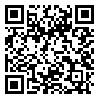Volume 46, Issue 4 (12-2022)
Research in Medicine 2022, 46(4): 8-14 |
Back to browse issues page
Download citation:
BibTeX | RIS | EndNote | Medlars | ProCite | Reference Manager | RefWorks
Send citation to:



BibTeX | RIS | EndNote | Medlars | ProCite | Reference Manager | RefWorks
Send citation to:
Mahdavi Anari S A A, Safarpour Lima B. Assessment of Functional MRI for Delineating Eloquent Brain Cortices in Persian Native Speakers. Research in Medicine 2022; 46 (4) :8-14
URL: http://pejouhesh.sbmu.ac.ir/article-1-3123-en.html
URL: http://pejouhesh.sbmu.ac.ir/article-1-3123-en.html
Department of Radiology, School of Medicine, Shahid Beheshti University of Medical Sciences, Tehran, Iran. , ali-mahdavi@sbmu.ac.ir
Abstract: (2074 Views)
Background and Aim: Functional magnetic resonance imaging (fMRI) has been widely used for pre-neurosurgical planning and may eventually become a routine pre- surgical imaging modality. The validity of fMRI for the clinical application depends on various factors such as proper task selection, correct statistical analysis, and threshold setting with appropriate patient cooperation. To compare the potential of five functional magnetic resonance imaging (fMRI) language paradigms in activating language areas in Persian-speaking volunteers in order to optimize these tasks for clinically useful protocol.
Methods: 16 healthy right-handed Persian-speaking volunteers were studied. Each individual performed five tasks during the fMRI scan: word generation (WG), object naming (ON), word reading (WR), word production (WP), and reverse word reading (RWR). In the current study's first phase, each task's ability to activate classical language areas was assessed using group analysis. In addition, the lateralization index (LI) for each subject-task was calculated and compared. In the second phase, the optimized protocol was assessed on 40 patients with different types of brain mass lesions or hippocampal sclerosis to assess the role of appropriate patient selection for achieving a reliable fMRI result.
Results: We found that WP, RWR, and WG robustly activated language-related areas in the dominant hemisphere. ON and WR failed to sufficiently delineate these activation areas. The highest activation intensities in the frontal lobe (including Broca's area) were seen with WP, whereas RWR showed the highest LI among all examined tasks. In the patient population, we found that accurate and reproducible fMRI strongly depends on the patient’s cooperation. In present study, we observed that a pre-test mock fMRI session held by a radiologist might help to predict which patients are more or less suitable candidates for fMRI.
Conclusion: Our results demonstrated that the Persian version of WG and newly presented WP and RWR tasks could be reliably used for the localization of language-related areas in Persian speakers. This type of language evaluation also can be used in the pre-surgical planning of neurosurgical procedures in the Persian population. We recommend the application of WP and RWR in routine clinical practice to avoid significant morbidities after brain lesion surgery.
Methods: 16 healthy right-handed Persian-speaking volunteers were studied. Each individual performed five tasks during the fMRI scan: word generation (WG), object naming (ON), word reading (WR), word production (WP), and reverse word reading (RWR). In the current study's first phase, each task's ability to activate classical language areas was assessed using group analysis. In addition, the lateralization index (LI) for each subject-task was calculated and compared. In the second phase, the optimized protocol was assessed on 40 patients with different types of brain mass lesions or hippocampal sclerosis to assess the role of appropriate patient selection for achieving a reliable fMRI result.
Results: We found that WP, RWR, and WG robustly activated language-related areas in the dominant hemisphere. ON and WR failed to sufficiently delineate these activation areas. The highest activation intensities in the frontal lobe (including Broca's area) were seen with WP, whereas RWR showed the highest LI among all examined tasks. In the patient population, we found that accurate and reproducible fMRI strongly depends on the patient’s cooperation. In present study, we observed that a pre-test mock fMRI session held by a radiologist might help to predict which patients are more or less suitable candidates for fMRI.
Conclusion: Our results demonstrated that the Persian version of WG and newly presented WP and RWR tasks could be reliably used for the localization of language-related areas in Persian speakers. This type of language evaluation also can be used in the pre-surgical planning of neurosurgical procedures in the Persian population. We recommend the application of WP and RWR in routine clinical practice to avoid significant morbidities after brain lesion surgery.
Type of Study: Original |
Subject:
Radiology
Received: 2021/11/21 | Accepted: 2022/07/9 | Published: 2023/02/15
Received: 2021/11/21 | Accepted: 2022/07/9 | Published: 2023/02/15
Send email to the article author
| Rights and permissions | |
 |
This work is licensed under a Creative Commons Attribution-NonCommercial 4.0 International License. |







